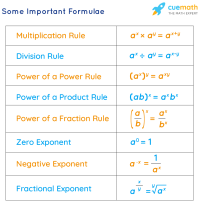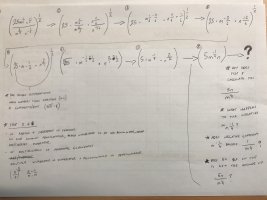
answer:

My solution:
Apply Quotient Property rule..
((25m^1/6 - ^4/6)/(n^-1/6 -11/6))^1/2
((25m^-3/6)/(n^12/6 ))^1/2
((25m^-1/2)/(n^2/1 ))^1/2
I believe I am stuck at this point, however I will do what i think...
((25)^1/2 (m^-1/2)^1/2)/(n^2/1)^1/2)
Simplify.. square integer & Apply product to power rule..
((sqr 25) (m^-1/2)^1/2)/((n^2/1)^1/2) <----- still unsure when to use square root vs 25*1/2, which equals 12.5
((5) (m^-2/2)/(n^3/2))
(5m)/(n^3/2)
And there you have, still lost as usual. I need to understand what I am doing wrong, before i can continue to next chapter..
How did 5 combine with the 'n' variable, when 25 was connected to 'm'.. so lost.


